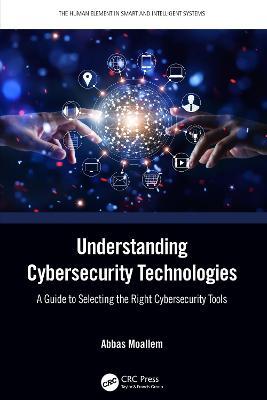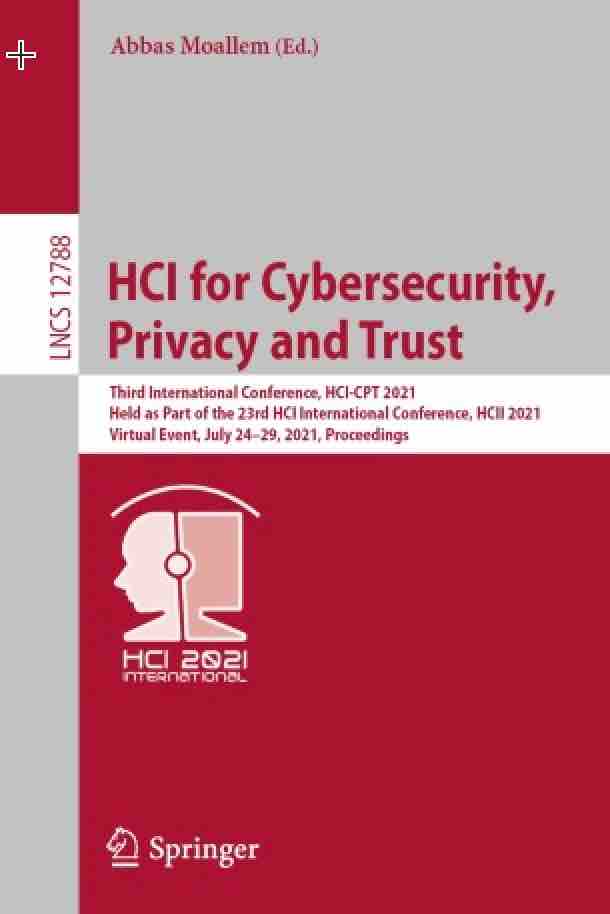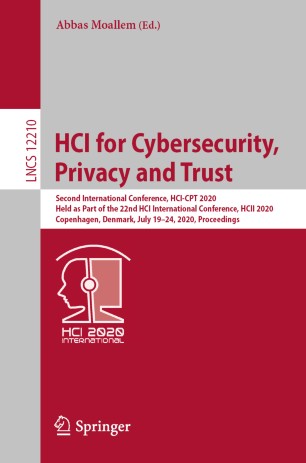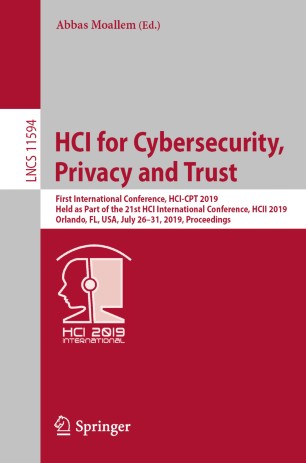
Key Features

Covers main areas of Human-Computer Interaction and Human Factors in cybersecurity SAVE 20%
Includes information for IT specialist who often desire (or IT specialists then desire) more knowledge about the human side of cybersecurity
Provides a reference for other disciplines such as psychology, behavioral science, software engineering, and security management offers a source of information for cybersecurity
Includes the review of laws and regulation in the new areas such as Internet of Things
From Preface
"This pioneering Handbook, the first of its kind in this field, fills a significant gap in an important domain of investigation, by reflecting recent developments, consolidating present knowledge and opening new perspectives for the future. It provides a structured guide for beginners, a reference collection for more experienced practitioners and researchers in the field, as well as an important educational tool for undergraduate and postgraduate students.
The book is structured in six parts and contains 18 Chapters written by 32 authors from 10 countries, coming from academia, research institutions, industry and public policy institutions. "
Constantine Stephanidis
Table of contents
- User authentication: Alternatives, effectiveness and usability
- Biometrics
- Machine Identities – foundational to cyber-security
- Trust
- New Challenges for User Privacy in Cyberspace
- Insider Threat: The forgotten, yet formidable foe
- Social Engineering
- Money Laundering and Black Markets
- Home Network
- Trusted IoT in Ambient Assisted Living Scenarios
- Smart Cities under Attack: Cybercrime and Technology Response
- Supervisory Control and Data Acquisition – SCADA
- Healthcare Information Security and Assurance
- Home Network
- United States Cybersecurity and Privacy Regulations
- The Impact of Recent Legislative in the European Union on Information Security
- Privacy and Security in the IoT: Legal Issues Government and Security Agencies
- Security Agencies
- Enterprise Solutions and Technologies
- Future Perspective
Contibutor
1.Chapter 1: Steven Furnell
2. Chapter 2: Francisco Corella
3. Chapter 2:Karen Lewison
4. Chapter 3: Hari Nair
1. Chapter 4: Adam Wojtowicz
2. Chapter 4:Wojciech Cellary
3. Chapter: 5:David Schuster
4. Chapter 5: Scott Alexander
1. Chapter: 6: Maria Papadaki
2.Chapter 6: Stavros Shiaele
3. Cahpter 7: Abbas Moallem
4. Cahpter 8: Brita Sands Bayatmakou
1. Chapter 9: Elias Z. Tragos
2. Chapter 9: Aqeel Kazm
3. Chapter 9: Alexandros Fragkiadakis
4. Chapter 9: Martin Serrano.
5. Chapter 10: Ralf C. Staudemeyer
6. Chapter 10: Artemios G. Voyiatzis
7. Chapter 10: George Moldovan(M)
8. Chapter 10: Santiago Reinhard Suppan
9.Chapter 10: Athanasios Lioumpas
10. Chapter 10: Daniel Calvo
11. Chapter 11: Nathan Lau)
12. Chapter 11: Hao Wang
10. Chapter 12: Ryan Gerde
11.Chapter 13:Ulku Yaylacicegi Clark
12. Jeffrey G. Baltezegar
1. Home Network
2. Chapter 14: Mark Schertler
3. Chapter 14:Jill Bronfman
4. Chapter 15:Gerald Quirchmayr
5. Chapter 16:Rolf H. Weber
6. Chapter 17:Greg A. Ruppert
7. Chapter 18:Michael Cook
Editor
Abbas Moallem is an executive director of UX Experts, LLC, and an adjunct professor at San Jose State University and California State University, East Bay, where he teaches human-computer interaction (HCI), human factors, and cybersecurity. Dr. Moallem holds a Ph.D. in human factors and ergonomics from the University of Paris (Paris XIII) and has over 20 years of experience in the fields of human factors, ergonomics, HCI, and usability. He worked or consulted with numerous companies.

The book in numbers
Pages
Useful topics
Book Review
"This excellent pioneering handbook on HCI aspects of cybersecurity is a must read for all who are concerned with computer information security."
"This important book is very timely as cybersecurity becomes the most critical factor in assuring safe and effective communication and ultimately business success."
Cybersecurity Awareness Among Students and Faculty
In modern times, all individuals need to be knowledgeable about cybersecurity. They must have practical skills and abilities to protect themselves in cyberspace. What is the level of awareness among college students and faculty, who represent the most technologically active portion of the population in any society?


Smart and Intelligent Systems: The Human Elements in Artificial Intelligence, Robotics, and Cybersecurity
This book presents new areas of smart and intelligent system design. It defines smart and intelligent systems, offers a human factors approach, discusses networking applications, and combines the human element with smart and intelligent systems.This book is perfect for engineering students in data sciences and artificial intelligence and practitioners at all levels in the fields of human factors and ergonomics, systems engineering, computer science, software engineering, and robotics.
Understanding Cybersecurity Technologies
Cyberattacks on enterprises, government institutions, and individuals are exponentially growing. At the same time, the number of companies, both small and large, offering all types of solutions has been increasing too. Since companies rely on technological solutions to protect themselves against cyberattacks, understanding and selecting the right solutions among those offered presents a significant challenge for professionals, company executives, and newcomers to the cybersecurity field.







